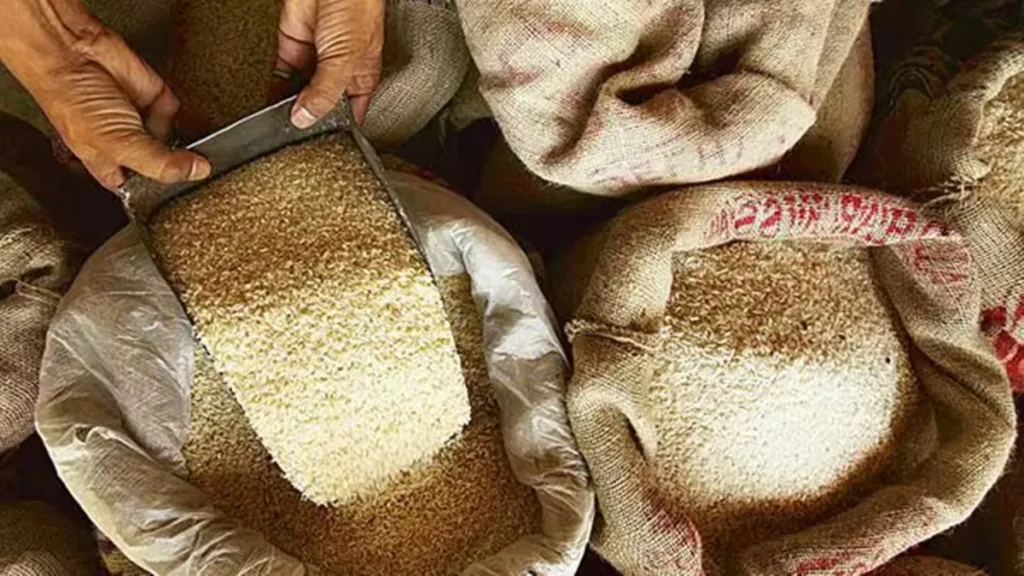NEW DELHI: Given the forecast of ‘above normal’ monsoon rainfall, the government has set a record target of 354.64 million tonne (MT) for food grains production in the 2025-26 crop year (July-June).
This is an increase of 4% from the target for the current (2024-25) crop year, which itself is an all-time high, a senior agriculture ministry official said on Thursday.
Of the estimated total food grains production in the next crop year, the forthcoming kharif season is likely to contribute 168.88 MT and rest by rabi and summer harvests. Food grains include wheat, rice and coarse cereals, pulses and oil seeds.
Rice and wheat crops in the next crop year are projected at 147 MT and 117 MT respectively, implying annual increases of 8% and 2%.
Though higher food grains production increases the chances of another year of high growth in agriculture, the gross value added (GVA) in this primary sector of the economy is also a function of prices fetched by the farmers and other stakeholders. The minimum support prices (MSPs) which are implemented on the ground largely for wheat and rice, and contingent measure in the pulses category, also have a say on the agriculture growth.
GVA in agriculture and allied sectors grew by robust 3.8% (second advance estimates) in FY25, as compared with 1.4% in FY24. Crops account for roughly 55% of farm-sector GVA, and the livestock sector’s share is 30%.
In recent years, the crop segment, which includes horticulture, has been losing share in the gross value added in agriculture and allied sectors. The livestock sector has been growing at a much higher compound annual growth rate. Production of horticultural crops — fruits, vegetables, plantation and spices — which contribute a third of agriculture GVA, has also witnessed solid growth rate in recent years.
A trend being witnessed is of a decline in the impact of monsoon performance on crop production, and purely rainfed cultivation is shrinking.
In the current crop year (2024-25) against the target of 341.55 MT, 330.97 MT of output has been achieved so far. The relatively small summer crop output will be included in the overall production.
The national conference of agriculture for kharif campaign was chaired by agriculture minister Shivraj Singh Chouhan for formulating strategy for the forthcoming kharif crops. The target for the grain production for next crop year was approved in the presence of several officials, ministers from the states.
“Despite weather conditions being not very conducive, foodgrain production is rising steadily,” Chouhan said while stressing the need for preparing strategies for a productive and resilient Kharif season across the country.
The Indian Meteorological Department last month had predicted ‘above normal’ southwest monsoon (June-September) rains at 105% of the benchmark – long period average. The country receives over 75% of annual rainfall during June-September period.
In terms of fertiliser availability, Chouhan said the government has assessed key fertiliser – urea, Di-ammonium phosphate (DAP) and NPK at 36.26 MT in the next Kharif season (2025-26) and there are adequate availability of soil nutrients at present.
Earlier Rajesh Kumar Mishra, secretary, department of fertilizer urged states to reduce DAP and adopt single super phosphate (SSP) as the country imports over 54% of DAP usage of around 11 MT annually.
Agriculture ministry Chouhan also announced a pan-India 15 day campaign which would commence on May 29 for raising awareness amongst 1 – 1.5 crore farmers about better farm practices, new seed varieties across 700 districts.
The campaign named ‘Viksit Krishi Sankalp Abhiyan’ is scheduled during the May 29-June 12 period where 2,000 teams of scientists, state government officials and progressive farmers would visit districts and apprise farmers about latest technologies and farm practices.
The campaign aims to spread awareness about modern techniques for key Kharif crops, promote government schemes, and guide farmers on crop selection and balanced fertilizer application using soil health cards.
Stating that the Indus Waters Treaty of 1960 was a ‘historical mistake’, Chouhan said the government will make ‘short, mid and long-term’ plans to use river waters that were earlier given to Pakistan under the treaty. “The water will now be utilised to help Indian farmers, especially in bordering states,” he said.
Source: The Financial Express

 Victory Day On May 9 Is About Celebrating Liberation From Fascism
Victory Day On May 9 Is About Celebrating Liberation From Fascism 